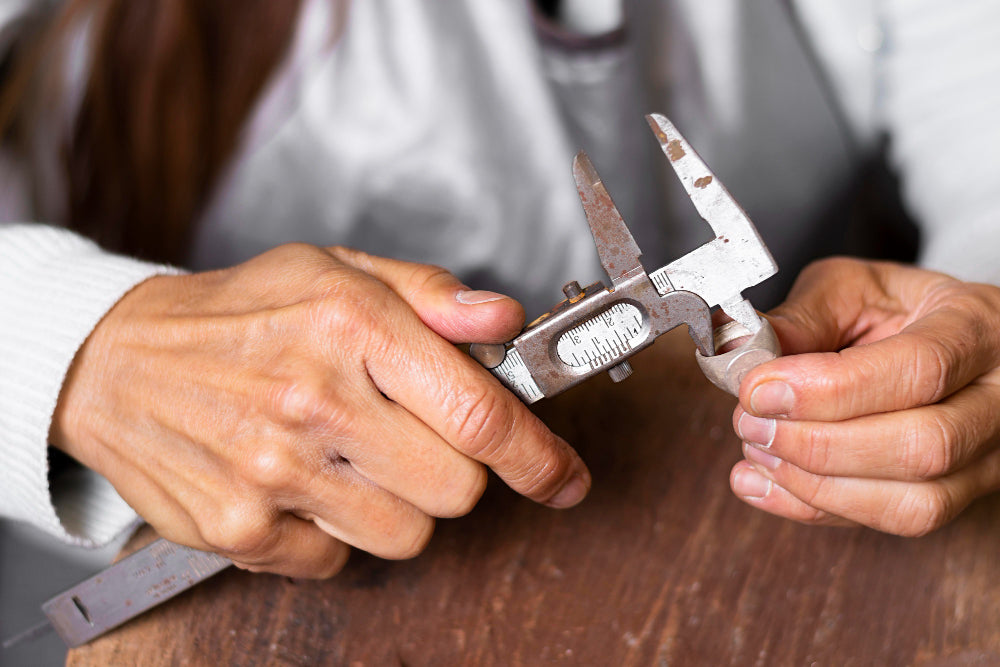
Digital vs Analog Vernier Calipers: Which One’s Right for You?
When it comes to precision measurements, vernier caliper tools are a staple in engineering workshops, manufacturing floors, laboratories, and even home toolkits. With evolving technology, traditional analog models now share the spotlight with high-tech digital measuring calipers. But which one should you choose?
This comprehensive guide breaks down the differences, pros and cons, and the ideal use cases for both digital and analog vernier calipers, so you can decide which suits your needs best.
What Are Vernier Calipers?
Vernier caliper tools are precision instruments used to measure internal and external dimensions, as well as depths, with remarkable accuracy. They work by sliding scales along a main scale and using a vernier scale for precise readings. Originally developed in the 1600s, they are still used today in both analog and digital formats.
From measuring the thickness of a mechanical part to ensuring perfect alignment in scientific experiments, these tools are indispensable wherever fine measurements matter.
Types of Vernier Caliper Tools
1. Analog Vernier Calipers
These traditional tools consist of a main scale and a vernier scale. The user aligns the two to determine the measurement. No batteries, no digital display.
2. Digital Measuring Calipers
These use electronic sensors and an LCD display to provide instant readings. They often come with features like metric/inch conversion and data storage.
Digital Vernier Calipers: Features and Benefits
Precision Made Simple
Digital measuring calipers offer high precision with an easy-to-read digital display. Measurements are often accurate to 0.01 mm or 0.0005 inches.
Key Features:
➟ Digital LCD for easy reading
➟ Zero setting at any position
➟ Inch/metric conversion
➟ Auto-off to save battery
➟ Data transfer options (USB, Bluetooth)
Benefits:
Ease of use: No need to manually interpret readings.
Fast: Instant readouts improve efficiency.
Modern features: Perfect for data-driven environments.
User-friendly: Ideal for beginners or occasional users.
When to Use Digital:
➟ Quality control environments
➟ Manufacturing lines
➟ Laboratories
➟ Student training programs
Analog Vernier Calipers: Features and Benefits
Mastering the Manual Art
Analog or mechanical calipers don’t rely on batteries or electronic components. Their robust design and mechanical simplicity make them ideal for environments where electronics may fail.
Key Features:
➟ Stainless steel build
➟ Dual-scale reading (metric/inch)
➟ Fine adjustment thumb screw
Benefits:
Reliability: No battery or electronic failure risk.
Longevity: With proper care, they last decades.
Affordability: Generally cheaper than digital versions.
Accuracy: Still offers precision up to 0.02 mm.
When to Use Analog:
Harsh working environments (dusty, oily, magnetic)
Field work
Educational labs to teach fundamentals
Head-to-Head Comparison
| Feature | Digital Vernier Calipers | Analog Vernier Calipers |
|---|---|---|
| Readability | High | Moderate |
| Accuracy | Up to 0.01 mm | Up to 0.02 mm |
| Cost | Generally higher | Generally lower |
| Battery Requirement | Yes | No |
| Durability | Sensitive to environment | Very durable |
| Data Output | Yes (in advanced models) | No |
| Skill Requirement | Low | Moderate |
Factors to Consider When Choosing
1. Application
If you're working in high-tech, data-driven environments, go digital. If you're working outdoors or in rugged conditions, analog may be more reliable.
2. Budget
If cost is a concern, analog models offer high precision at a lower price point. For long-term efficiency, digital models might justify the investment.
3. Experience Level
Beginners often find digital easier to use, while professionals who grew up using analog may prefer the tactile control and familiarity.
4. Maintenance
Digital models require battery replacements and careful storage. Analog models are nearly maintenance-free
Applications Across Industries
Vernier caliper tools are essential in numerous fields:
Engineering & Manufacturing
Measuring component thickness and dimensions
Verifying tolerances during production
Ensuring precision in CNC and automated machining processes
Healthcare
Measuring surgical and diagnostic tools
Ensuring accurate fittings for prosthetics and implants
Automotive
Measuring engine parts, brake rotors, and other critical components
Assisting in repair and restoration with high accuracy
Educational Institutions
Teaching students the fundamentals of precise measurement
Used in physics and engineering labs for real-world application
Home DIY Projects
Ideal for woodworking, 3D printing, metalwork, and mechanical hobbies
Perfect for precise layouts, cuts, and alignment
Why Choose HK Calibrations for Vernier Calipers
While many companies offer vernier calipers for sale, HK Calibrations stands out for its commitment to quality, precision, and reliability. Their collection includes both digital measuring calipers and traditional analog models suitable for a wide range of professional and personal applications.
HK Calibrations ensures that every caliper is pre-tested and calibrated to the highest Australian standards. Whether you're a student, engineer, or manufacturer, you’ll find the right tool for your needs.
They offer:
➟ Stainless steel analog calipers
➟ LCD display digital calipers
➟ Certified calibration for all instruments
➟ Australia-wide shipping
Conclusion
So, digital vs analog vernier calipers which one’s right for you? If you value speed, convenience, and digital integration, digital measuring calipers are a fantastic choice. If you prefer durability, lower cost, and don’t mind a hands-on approach, go with analog.
Ultimately, the best choice depends on your specific needs, work environment, and personal preference. One thing's certain: high-quality vernier caliper tools from trusted suppliers like HK Calibrations ensure you’re getting precise results every time.
Ready to upgrade your toolbox? Explore vernier calipers for sale and choose the one that fits your precision needs.

